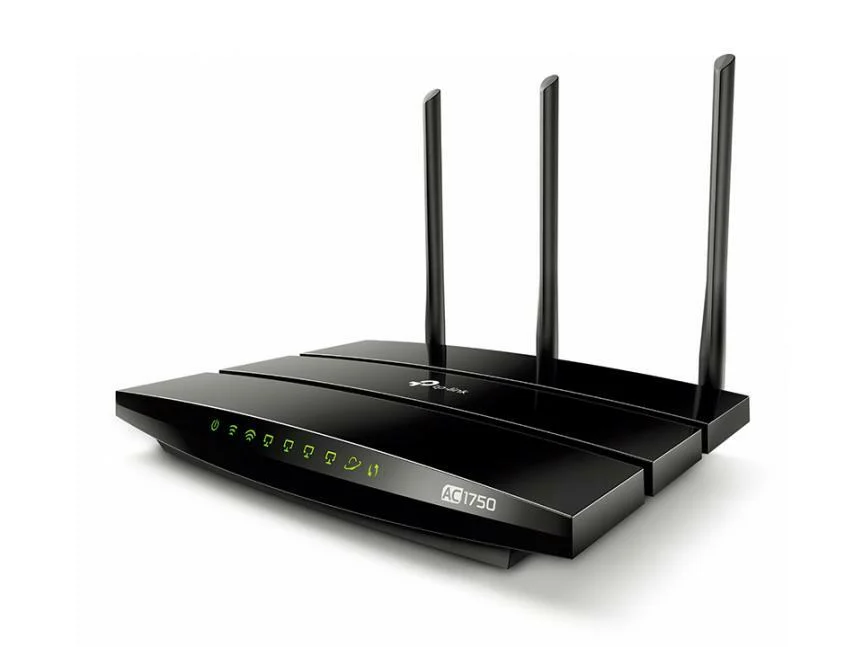Utility-Based Broadband Touted as Solution for Addressing Digital Divide. In today’s interconnected world, access to reliable and affordable broadband internet has become increasingly vital for individuals, businesses, and communities. However, a significant portion of the global population still lacks access to this essential resource, creating a digital divide that perpetuates inequalities. To bridge this gap, a promising solution known as utility-based broadband is gaining traction as an effective approach. This article will explore the concept of utility-based broadband, its benefits, and its potential to address the challenges posed by the digital divide.
Understanding the Digital Divide
Defining the Digital Divide
The digital divide refers to the gap between those who have access to digital technologies, such as the internet, and those who do not. This disparity can be influenced by various factors, including socioeconomic status, geography, infrastructure limitations, and affordability. The consequences of the digital divide are far-reaching, impacting education, employment opportunities, healthcare access, and social inclusion.
Magnitude of the Digital Divide
Despite advancements in technology, a significant portion of the global population remains digitally excluded. According to recent statistics, around 46% of the world’s population still lacks internet connectivity, with the majority concentrated in developing countries. Furthermore, even in regions where access is available, there are disparities in terms of speed, reliability, and affordability, further exacerbating the digital divide.
Challenges of Bridging the Digital Divide
Infrastructure Limitations
Expanding broadband infrastructure to underserved areas is a major challenge in bridging the digital divide. Remote and rural regions often lack the necessary infrastructure, such as fiber-optic cables or cellular towers, making it difficult and costly to provide reliable internet connectivity.
Affordability and Accessibility
Even in areas with existing infrastructure, many individuals cannot afford internet services or the necessary devices to access them. Affordability remains a significant barrier, particularly for low-income households and marginalized communities. Additionally, digital literacy and skills gaps can impede individuals from effectively utilizing available resources.
Cultural and Linguistic Barriers
Language and cultural diversity present additional challenges in bridging the digital divide. Lack of localized content, online services, and language-specific interfaces can hinder digital inclusion efforts, particularly in regions with distinct linguistic or cultural backgrounds.
The Role of Utility-Based Broadband
What is Utility-Based Broadband?
Utility-based broadband refers to the provision of broadband internet as a public utility, similar to other essential services like water, electricity, and gas. It involves treating broadband as a necessity rather than a luxury, with the aim of ensuring universal access and affordable connectivity for all individuals and communities.
Benefits of Utility-Based Broadband
Universal Access and Affordability
One of the key advantages of utility-based broadband is its potential to provide universal access to affordable internet services. By considering broadband as a public utility, governments and regulatory bodies can implement policies and initiatives that prioritize equitable access, reducing the affordability barrier and ensuring a level playing field for all.
Reliability and Quality
Utility-based broadband initiatives emphasize the importance of reliable and high-quality internet services. By investing in robust infrastructure and monitoring service standards, these initiatives aim to provide a consistent and satisfactory user experience, eliminating the discrepancies in connectivity and speed that contribute to the digital divide.
Community Empowerment and Development
Utility-based broadband has the potential to empower communities by enabling them to access information, educational resources, healthcare services, and economic opportunities. By bridging the digital divide, utility-based broadband can foster economic growth, improve educational outcomes, and enhance social inclusion, ultimately contributing to the overall development of communities.
Digital Inclusion and Equity
By treating broadband as a public utility, utility-based broadband initiatives prioritize digital inclusion and equity. They aim to ensure that marginalized communities, such as rural areas, low-income households, and underserved regions, have equal opportunities to access and benefit from the digital world. This approach promotes social justice and works towards narrowing the socioeconomic disparities caused by the digital divide.
Implementing Utility-Based Broadband Solutions
Implementing utility-based broadband solutions requires a comprehensive and collaborative approach involving government agencies, regulatory bodies, internet service providers (ISPs), and community stakeholders. Some key strategies include:
Public-Private Partnerships
Collaborations between public and private entities can leverage the strengths and resources of both sectors. Governments can provide policy frameworks, funding, and infrastructure support, while ISPs bring their technical expertise, network infrastructure, and service provision capabilities. These partnerships foster innovation, efficiency, and sustainable broadband deployment.
Regulatory Reforms
Regulatory frameworks need to be adjusted to support utility-based broadband initiatives. This may include measures such as granting universal service obligations to ISPs, implementing fair competition policies, ensuring net neutrality, and establishing affordable pricing structures. Regulatory reforms should be tailored to the specific needs and challenges of each region.
Infrastructure Development
Expanding broadband infrastructure is a critical aspect of utility-based broadband implementation. This includes investing in fiber-optic cables, wireless networks, and satellite technology to reach remote areas. Governments can facilitate infrastructure development through subsidies, tax incentives, and public investment in backbone networks.
Digital Literacy Programs
To ensure the effective use of broadband services, digital literacy programs should be implemented alongside infrastructure development. These programs aim to enhance the skills and knowledge required to navigate the digital landscape, including basic computer literacy, internet usage, online safety, and critical thinking. Targeted programs for different demographics and languages can maximize inclusivity.
Case Studies: Successful Utility-Based Broadband Initiatives
Several countries and regions have implemented successful utility-based broadband initiatives, showcasing the potential impact of this approach in bridging the digital divide. Let’s explore a few notable case studies:
Case Study 1: South Korea
South Korea is often cited as a leading example of successful utility-based broadband deployment. The government’s commitment to widespread broadband access, coupled with strong regulatory frameworks, has resulted in high-speed connectivity for its citizens. The country’s emphasis on infrastructure development, digital literacy programs, and public-private partnerships has enabled South Korea to achieve remarkable digital inclusion and become a global leader in broadband penetration.
Case Study 2: Estonia
Estonia, a small Baltic country, has embraced utility-based broadband as a cornerstone of its digital transformation. The government has implemented a robust digital infrastructure, ensuring broadband access for all citizens. Estonia’s innovative e-governance initiatives, coupled with digital literacy programs and a supportive regulatory environment, have transformed the country into one of the most digitally advanced nations globally.
Case Study 3: Chattanooga, Tennessee, USA
Chattanooga, a city in Tennessee, USA, has successfully deployed a citywide utility-based broadband network known as the “Gig City.” By establishing a municipally owned fiber-optic network, Chattanooga has provided high-speed internet access to residents and businesses. This initiative has attracted new businesses, enhanced educational opportunities, and stimulated economic growth in the region, showcasing the potential of local-level utility-based broadband implementations.
Overcoming Barriers to Utility-Based Broadband
While utility-based broadband holds great promise in bridging the digital divide, several barriers need to be addressed for its successful implementation:
Funding and Investment
Expanding broadband infrastructure and ensuring universal access require significant funding and investment. Governments, private entities, and international organizations must collaborate to allocate resources and establish sustainable financing models for utility-based broadband projects. Public-private partnerships and innovative funding mechanisms can help overcome financial barriers.
Political Will and Policy Support
Utility-based broadband initiatives require strong political will and supportive policy environments. Governments need to prioritize digital inclusion in their agendas, develop comprehensive broadband strategies, and enact relevant legislation to foster utility-based broadband deployment. Political commitment and policy consistency are essential for long-term success.
Stakeholder Collaboration
Successful utility-based broadband implementation relies on collaboration between various stakeholders. Governments, ISPs, community organizations, educational institutions, and civil society must work together to identify local needs, develop tailored solutions, and ensure equitable access. Engaging all relevant stakeholders in the planning and decision-making processes fosters ownership and sustainability.
Addressing Connectivity Challenges
Expanding broadband infrastructure to remote and underserved areas presents technical challenges. Innovative approaches, such as leveraging satellite technology and wireless networks, can help overcome geographical barriers. Additionally, partnerships with existing infrastructure providers, such as electric utility companies, can expedite the deployment of utility-based broadband.
Digital Literacy and Skills Development
Ensuring digital literacy and skills development is crucial for the effective utilization of utility-based broadband. Educational programs, community centers, and awareness campaigns should be implemented to empower individuals with the knowledge and skills needed to navigate the digital world. Targeted initiatives for vulnerable groups, including seniors and people with disabilities, can maximize inclusivity.
The Future of Utility-Based Broadband
The future of utility-based broadband looks promising. As technology continues to advance and awareness of the digital divide increases, more governments and organizations are recognizing the importance of treating broadband as a public utility. Efforts are being made to bridge the gap through innovative partnerships, policy reforms, and infrastructure development. With continued investment and collaboration, utility-based broadband has the potential to transform societies, create opportunities, and promote digital inclusion on a global scale.
Conclusion
Utility-based broadband offers a viable solution for addressing the digital divide and ensuring universal access to reliable and affordable internet services. By treating broadband as a public utility, governments and stakeholders can prioritize digital inclusion, bridge socioeconomic disparities, and empower communities. Successful implementation requires funding, supportive policies, stakeholder collaboration, and a focus on addressing connectivity challenges and promoting digital literacy. With concerted efforts, utility-based broadband can be a catalyst for positive change, narrowing the digital divide and creating a more equitable digital future for all.
FAQs
Utility-based broadband refers to the provision of broadband internet as a public utility, ensuring universal access and affordable connectivity for all individuals and communities.
Utility-based broadband treats broadband as a necessity rather than a luxury, prioritizing universal access, affordability, reliability, and community empowerment to bridge the digital divide.
Utility-based broadband offers universal access, affordability, reliability, community empowerment, and digital inclusion, fostering economic growth, educational opportunities, and social inclusion.
Implementing utility-based broadband requires public-private partnerships, regulatory reforms, infrastructure development, and digital literacy programs tailored to the specific needs of each region.
South Korea, Estonia, and Chattanooga, Tennessee (USA), are examples of successful utility-based broadband initiatives that have achieved remarkable digital inclusion and socioeconomic development.



